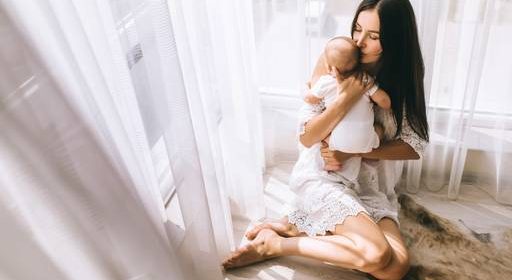What to do if the recent clock change is challenging your family's sleep routines

The clocks have just gone forward, meaning longer and brighter evenings and potentially brighter earlier mornings too. Personally, I love this time of year. The weather is slightly warmer, the fact that there is a stretch to the evenings signals that you could get more time doing things before settling in for the night and it also signposts the soon-to-arrive summer and all that it entails. Any change to the timings – back in the autumn and forwards in the spring – can challenge your already well-established sleep routines over the course of a week or so. Do your best now to maintain the positive sleep practices that you have established or work towards improving sleep in your household by observing some tendencies that may really help.
All over Ireland, children have started to resist bedtime because it is still bright outside. It can lead to unforeseen bedtime challenges that parents will need to manage to ensure that this does not become the start of a negative sleep cycle.
Just because the evenings are brighter and we could potentially push out bedtimes a bit, not all children will tolerate this and, slowly, it may take your child longer and longer to achieve sleep. Also, your overnight sleep may start to degrade too, leading to unnecessary night-time waking.
Manage the challenge
If now, due to brighter evenings, your child starts to object and resist sleep, create a response plan to manage this. Avoid delaying bedtime much from your original working bedtime as this will probably represent your child’s natural bedtime. Acknowledge that a large percentage of children from four months to six years of age benefit from a bedtime between 7-8pm. If your child does not routinely sleep well overnight, then the earlier side of this bandwidth the better, especially if you are planning on trying to improve their sleep this season.
Just because the evenings are brighter, this is no reason to push out bedtime, especially if you want to maintain a good overnight presentation. The use of blackout blinds and curtains, still creating a dark environment, will help indicate to your child that it is time to sleep and also encourage a deeper, rested sleep tendency.
Have a formal bedtime routine; make sure that this happens in the bedroom that your child will sleep in. This encourages positive associations with the bedroom and sleep, and also helps to ensure that you don’t break the spell of the bedtime relaxation qualities – taking them away from the busyness of the day and preparing their body to give way to sleep.
Don’t be afraid of having playtime outside, but once it is 20-30 minutes before sleep time, bring them in, provide their last milk feed and a wash up and commit to a calm bedtime routine, without screens in a dimly-lit space in the bedroom.
Using the darker environment will help to send the right message to the brain that it is time to sleep – underpinned then by your actions, relaxing them with songs and stories and connected time too. This all helps to promote the sleep hormone melatonin and the relaxing chemical oxytocin too.
Due to the clocks changing, many of you will attempt to establish a later bedtime in the hopes that a later wake time may emerge. Typically, I don’t try to get the time-change to achieve anything, but if it is willing to emerge, sometimes a later wake time is a possibility due to this time adjustment.
To ensure your child is still getting enough sleep overnight, make sure there is no light entering the room early in the morning from any source and that, when possible, there are no disturbances in the home before you would like your child to wake.
If necessary, adjust the heating setting to either come on much earlier than your desired wake time, or after. Either way, always treat any wake up before 6am as night-time and have a predictable response in line with the decisions you have made with regards to their sleep.
As you look towards the summer holidays too, do your best in the run up to the season to already have your child in an established age-relevant sleeping pattern. My book The Baby Sleep Solution can help you lay a foundation. Then, when you are planning to travel, you will already have a working sleep model to take on holiday with you.
Add layers to your bedtime routine that you can bring away with you – familiar story books and toys you can easily transport that your child associates with bed and sleep time. This way, your child will easily transition to sleep in another location from home.
Maintaining positive associations for sleep does not need to be entirely restrictive – you can always encourage some naps in the buggy or car on the go. It is just not a good idea to miss a nap or have too many late bedtimes in a row either. Happy almost-summer time.
Lucy Wolfe, CGSC, MAPSC, H.Dip RM is a sleep consultant, author of the bestselling book The Baby Sleep Solution, creator of ‘Sleep Through’ – a natural bed and body sleep spray and relaxing rub, and mum of four. She runs a private sleep consulting practice where she provides knowledge, expertise and valuable support to families across the country. See sleepmatters.ie |087 2683584 or
Source: Read Full Article